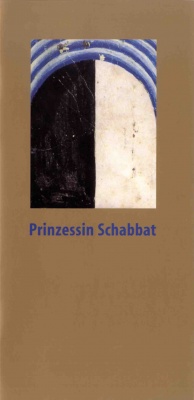Exhibition folder
© Jewish Museum Vienna
Jewish Museum Vienna, February 15 to May 26, 2002
Princess Shabbat
Shabbat is probably the most well-known holiday in the Jewish religion. It is the one day of the week on which, like God who rested on the seventh day, no work is to be done. Following exhibitions devoted to Pesach, Chanukah, Succoth and Rosh Hashanah, the Jewish Museum is now presenting an exhibition on Shabbat, based on six ritual objects of outstanding artistic and historical significance: six bsamim boxes made in Schwäbisch Gmünd in the first half of the eighteenth century, out of a total of eight examples existing in the world. The exhibits come from top-ranking collections (Gross Family Collection, Tel Aviv; Mainfränkisches Museum Würzburg; The Jewish Museum London; Museé National du Moyen Age, Paris; Jüdisches Museum Frankfurt; Det Mosaiske Troessamfund Kopenhagen). Apart from the bsamim boxes, other ritual objects used during Shabbat, particularly for kiddush and Havdalah, can be seen. They come from the Museum depot and include many objects from the old Jewish Museum in Vienna. The Museum also owns a magnificent bsamim box from Nuremberg, dating from the same period as the objects from Schwäbisch Gmünd. It belonged to the old Jewish Museum. Heinrich Heine’s poem Prinzessin Sabbath is the most outstanding commemoration of the Shabbat in German literature. This poem forms the framework for the exhibition, which also features audio extracts from the Shabbat service, ritual objects and explanations. The exhibition is designed in the form of a review of the weekly cycle, reflecting the eternal cycle from Shabbat to Shabbat. It starts with the creation, the six workdays, leading up to the Shabbat, the day of rest on which the week’s work can be contemplated. Curator: Felicitas Heimann-Jelinek
Exhibition architect: Martin Kohlbauer
Graphic design: Maria-Anna Friedl
